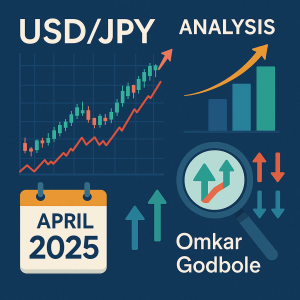Introduction
On October 8, 2025, financial markets worldwide faced significant turbulence, driven by a combination of domestic political instability, international economic concerns, and unexpected movements in major asset classes. Investors navigated an environment marked by uncertainty, as political developments in France and Japan, an ongoing U.S. government shutdown, and unprecedented gold prices influenced currency, equity, and commodity markets. These events together underscored how intertwined political and economic factors can shape global financial sentiment.
Political Instability In France
The resignation of French Prime Minister Sebastien Lecornu on October 6, 2025, sent immediate shockwaves through European markets. Lecornu’s unexpected departure created doubts about the stability of France’s government and raised concerns about potential delays in fiscal reforms and economic initiatives. The political vacuum amplified uncertainty over how France would manage public spending, taxation, and social policies during this transition period.
Investors reacted swiftly to this instability. The euro weakened against the U.S. dollar, falling to a one-month low. Market participants feared that continued political disruption could affect France’s economic growth and weaken confidence in the eurozone at large. The uncertainty also increased demand for safe-haven currencies, including the U.S. dollar and Japanese yen, although the yen faced its own challenges during this period. Analysts noted that the euro’s decline reflected broader apprehension about political risk in the European Union, which could influence investor confidence across the continent for weeks to come.
Pro-Stimulus Leadership In Japan
Meanwhile, Japan experienced its own political upheaval with the election of pro-stimulus leader Sanae Takaichi as Prime Minister. Takaichi’s leadership raised speculation that Japan might delay planned interest rate hikes to stimulate economic growth. The Japanese yen depreciated to an eight-month low against the U.S. dollar, trading at 152.535 yen per dollar, highlighting the market’s concerns over potential expansionary policies that could affect inflation, monetary policy, and currency stability.
This political shift signaled that the Bank of Japan might postpone tighter monetary policy, which investors interpreted as a sign of prolonged low-interest rates. As a result, Japanese exporters gained some optimism due to the weaker yen, which could boost overseas competitiveness, while foreign investors became more cautious about the currency’s future stability. Analysts suggested that Takaichi’s policies could also influence capital flows into Japan, affecting both bond and equity markets.
The Prolonged U.S. Government Shutdown
The United States entered its eighth day of a government shutdown, adding another layer of market uncertainty. The shutdown has disrupted federal operations, delayed economic reporting, and created significant uncertainty over the country’s fiscal stability. President Donald Trump’s threats of mass federal worker firings further exacerbated fears about the government’s functionality and its ability to manage ongoing economic challenges.
In response to these developments, the U.S. dollar surged, reaching a six-week high, as investors sought the relative safety of the world’s primary reserve currency. The dollar index climbed 0.3% to 98.91, reflecting widespread concern about global economic stability and the attractiveness of U.S. assets as safe-haven instruments. Treasury yields edged higher as investors evaluated the likelihood of Federal Reserve policy adjustments, including potential interest rate cuts to stabilize growth and confidence amid domestic turmoil.
The shutdown also raised questions about consumer confidence, government spending, and the robustness of the U.S. labor market. Economic analysts highlighted that prolonged government inactivity could hinder economic growth and impact corporate earnings, prompting caution among market participants.
Record Gold Prices Amid Market Uncertainty
Amid the political and economic turmoil, gold prices soared to unprecedented levels, briefly surpassing $4,000 per ounce. Investors turned to gold as a safe-haven asset, seeking protection from currency volatility, inflationary pressures, and geopolitical instability.
The record-setting surge reflected both domestic and international concerns. In the United States, fears of a prolonged shutdown increased the appeal of tangible assets. Internationally, uncertainties in Europe and Asia further fueled demand for gold. Analysts emphasized that gold’s ascent was a clear signal of risk aversion in global markets, with investors prioritizing stability over higher-yielding but more volatile investments.
The unprecedented gold prices also influenced other commodity markets. Precious metals broadly saw increased activity, with silver and platinum experiencing price gains as investors hedged against potential market disruptions. This shift toward tangible assets highlights the growing interconnection between macroeconomic policy, investor sentiment, and commodity markets.
Currency Market Dynamics
The strength of the U.S. dollar against multiple currencies was one of the most notable market developments on October 8, 2025. The dollar surged against the euro, Japanese yen, and Chinese yuan, reflecting investor preference for stability amid uncertainty. The U.S. dollar index reached a six-week high, demonstrating the currency’s continued role as a global safe haven.
Conversely, other currencies experienced significant pressure. The New Zealand dollar dropped sharply following the Reserve Bank of New Zealand’s surprise 50 basis point interest rate cut. This dovish move signaled a commitment to supporting economic growth but also highlighted investor concerns about the currency’s medium-term strength. Similarly, emerging market currencies were affected by the stronger dollar, raising concerns about capital outflows and potential stress in local bond markets.
Analysts suggested that the continued volatility in currency markets might influence global trade, cross-border investments, and multinational corporate earnings. The interplay between central bank policies and political developments will likely remain a key driver of forex market trends in the coming weeks.
Equity Market Performance
Global equities displayed mixed results on October 8, 2025. In Asia, stock markets tracked Wall Street’s decline, with MSCI’s Asia-Pacific index down by one percent. Japan’s Nikkei 225 saw modest gains, rising 0.35%, reflecting optimism among exporters benefiting from a weaker yen. However, broader investor sentiment remained cautious due to political uncertainties and potential economic slowdowns.
In Europe, markets were similarly affected by political instability, particularly in France, where the government transition raised questions about fiscal policy and regulatory direction. Investors reassessed risk exposure in European equities, with major indices showing limited gains amid volatility.
The United States also experienced declines in stock indices, driven by concerns over the government shutdown and its potential effects on consumer confidence, spending, and economic growth. Analysts noted that market participants are increasingly relying on hedging strategies to manage risk in this uncertain environment.
Commodities And Market Reactions
Besides gold, other commodity markets also reflected investor caution. Oil prices experienced a slight decline due to expectations of a weakening global demand amid economic uncertainty. The interplay between geopolitical developments, currency fluctuations, and supply chain considerations continues to shape commodity prices and market sentiment globally.
Investors remain vigilant, monitoring central bank communications, fiscal policy announcements, and political developments that could affect market dynamics. The current environment highlights the need for diversified investment strategies to manage risk effectively.
Outlook For Global Markets
Looking forward, global markets are expected to remain volatile as political and economic uncertainties persist. Investors are closely monitoring developments in France, Japan, and the United States, as these regions have a substantial influence on currency, equity, and commodity markets.
The interplay between central bank policies, government actions, and investor sentiment will continue to shape market outcomes. Analysts suggest that currency markets may remain particularly sensitive to news regarding interest rate adjustments and political stability. Similarly, commodities such as gold may continue to attract safe-haven flows, while equities could experience intermittent volatility in response to domestic and international developments.
Conclusion
October 8, 2025, serves as a vivid reminder of how political instability, policy uncertainty, and investor sentiment can converge to create significant market turbulence. The combination of a prolonged U.S. government shutdown, record gold prices, and shifts in political leadership in Europe and Asia has profoundly affected global currencies, equities, and commodities.
Investors navigating this landscape must consider the multifaceted influences driving market behavior, from central bank decisions to geopolitical events. Maintaining a diversified portfolio and monitoring developments closely remain essential strategies for managing risk and identifying opportunities in this complex environment.



